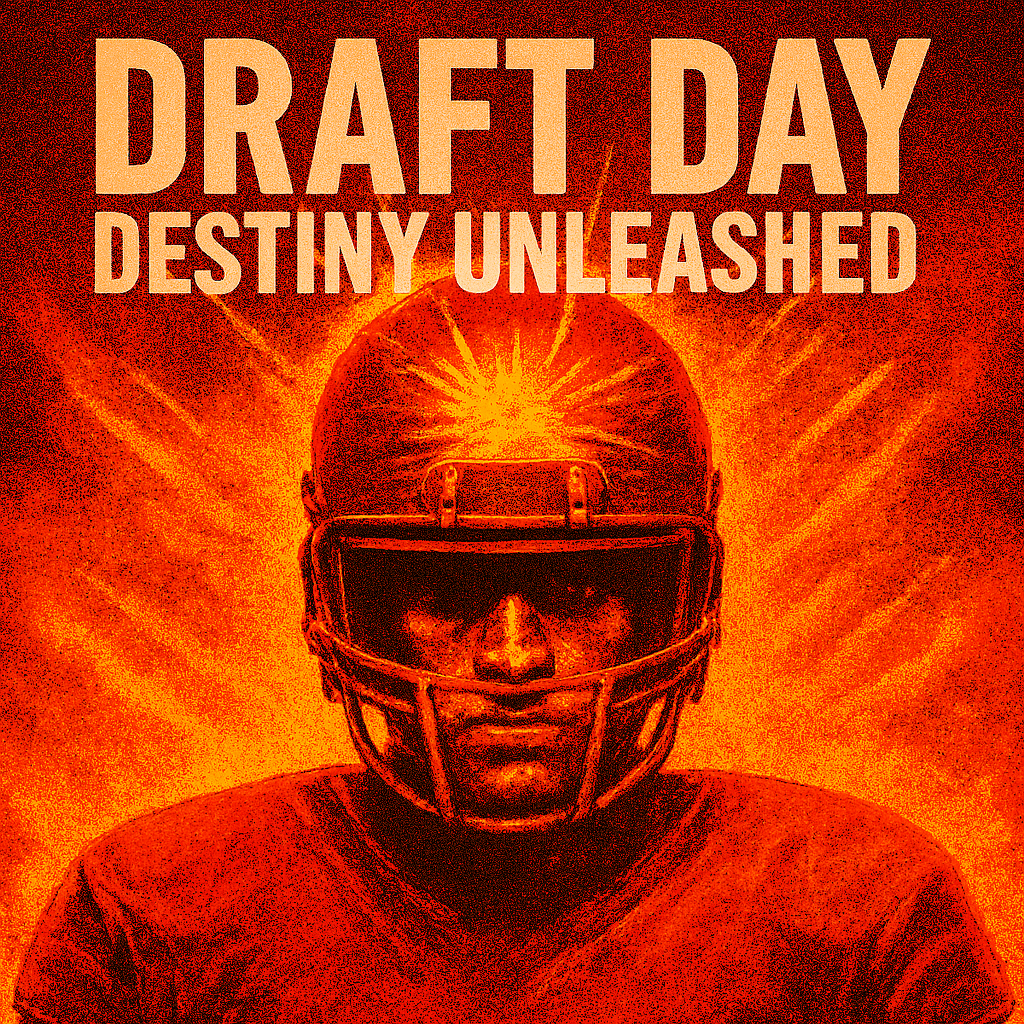Melbourne’s Myth Meets Queensland’s Roar From Turf to Identity – How the 2025 AFL Grand Final Redefined the Nation’s Sporting Narrative
AFL Grand Final 2025
A Grand Final That Rewired the AFL’s Soul
The 2025 AFL Grand Final was a seismic moment in Australian sport. Brisbane Lions defeated Geelong Cats by 47 points at the Melbourne Cricket Ground. The final score was Brisbane 18.14 (122) to Geelong 11.9 (75). Over 100,000 fans filled the MCG to witness the clash. The match was close at halftime—an extremely rare occurrence in Grand Final history. Brisbane surged in the final quarter, kicking nine goals to Geelong’s four. Charlie Cameron and Hugh McCluggage each kicked four goals. Will Ashcroft won the Norm Smith Medal for best on ground. Brisbane claimed their fifth premiership and second in succession. This wasn’t just a win—it was a cultural shift.
The Scoreline That Shook the MCG
Brisbane’s 47-point victory was built on relentless pressure and final-quarter dominance. The Lions kicked nine goals in the last term, turning a close contest into a rout. Geelong’s defence collapsed under Brisbane’s small-forward movement. Charlie Cameron kicked four goals, including two in the final quarter. Zac Bailey had nine scoring shots and finished with three goals. Hugh McCluggage added four goals and ten score involvements. Jeremy Cameron’s arm injury limited his impact after quarter time. Patrick Dangerfield struggled to break free from Brisbane’s midfield pressure. Brisbane’s accuracy in front of goal contrasted with Geelong’s missed chances. The scoreboard told a story of tactical superiority and emotional control.

Melbourne’s Identity Under Siege
The MCG has long been the spiritual home of Australian rules football and cricket. Hosting the Grand Final is a point of pride for Melbourne. Brisbane’s win on this turf disrupted that mythology. Victorian fans watched as a Queensland team celebrated on sacred ground. The city’s grip on AFL culture loosened in real time. Brisbane’s roar echoed through a stunned crowd. The result challenged assumptions about Victorian dominance. Melbourne’s media must now recalibrate its narrative lens. The Grand Final remains in Melbourne, but its meaning is now shared. Brisbane’s triumph was a symbolic decentralisation of football power.
The Final Quarter That Changed Everything
At three-quarter time, Brisbane led by 19 points. The final term became a statement of intent. Charlie Cameron kicked two early goals to ignite the surge. Cam Rayner and Will Ashcroft followed with majors. Geelong’s only resistance came from a 50m penalty goal to Mark Blicavs. Brisbane’s midfield controlled territory and tempo. Their small forwards found space and finished clinically. The Lions outscored Geelong 9.3 to 4.1 in the final term. The quarter turned a contest into a coronation. Brisbane didn’t just win—they overwhelmed.
The Players Who Rose and Fell
Charlie Cameron redeemed his quiet qualifying final with four goals. Hugh McCluggage was everywhere—winning clearances and delivering inside 50s. Zac Bailey’s pressure created scoring chances and chaos. Will Ashcroft’s poise earned him the Norm Smith Medal. Lachie Neale, subbed in during the third quarter, kicked a crucial goal. Jeremy Cameron’s injury limited his movement and impact. Patrick Dangerfield was contained by Brisbane’s midfield structure. Max Holmes led Geelong’s disposals but lacked support. Ollie Dempsey showed flashes but couldn’t shift momentum. Brisbane’s stars rose—Geelong’s faltered.

The Umpires and the Unseen Pressure
The officiating was consistent and restrained. No major controversies emerged from the match. The umpires allowed physical contests to unfold naturally. Brisbane adapted better to the game’s rhythm. Geelong’s frustration occasionally surfaced but didn’t boil over. The whistle was used sparingly and effectively. Key decisions were met with crowd reaction but not outrage. The umpires maintained flow without over-intervention. Their neutrality preserved the integrity of the contest. In a Grand Final, that balance is essential—and it was delivered.
The Crowd and the Cultural Pulse
Over 100,000 fans attended the Grand Final at the MCG. Early crowd energy favoured Geelong. Brisbane’s final-quarter surge flipped the emotional tide. Queensland supporters found their voice in the heart of Melbourne. The crowd’s reaction mirrored the nation’s shifting allegiances. Melbourne’s stunned silence reflected cultural disruption. The MCG became a stage for Queensland pride. The atmosphere was electric, tense, and transformative. Fans witnessed more than a game—they witnessed a shift. The crowd became part of the story.
Queensland’s Rise and Victoria’s Reflection
Brisbane’s win reinforces Queensland’s growing AFL influence. The state has invested heavily in talent development and infrastructure. Today’s result validates that strategy. Victoria, long the dominant force, must now reflect. The decentralisation of AFL power is no longer theoretical. Brisbane’s back-to-back flags signal a new era. The sport’s future will be shaped by multiple heartlands. Queensland’s success is no longer an anomaly—it’s a pattern. Victoria’s supremacy is now contested. The Grand Final was a turning point in that journey.
Brisbane Lions Victory
The Legacy of Brisbane’s Core Leaders
Charlie Cameron, Dayne Zorko, Harris Andrews, and Lachie Neale anchored Brisbane’s resurgence. Their leadership defined the Lions’ culture. Cameron’s redemption arc was emblematic of the team’s resilience. Zorko’s composure under pressure steadied the group. Andrews’ defensive command shut down Geelong’s forward entries. Neale’s late goal was a moment of inspiration. These players shaped Brisbane’s identity. Their influence extends beyond the scoreboard. They built a legacy of belief and discipline. Brisbane’s culture is now defined by their example. The premiership is their reward.

Will Ashcroft and the Norm Smith Moment
Will Ashcroft delivered a performance of maturity and impact. He finished with 32 disposals and three goal assists. His final-quarter goal was a turning point. Ashcroft’s link-up play created scoring chains. His defensive efforts added layers to Brisbane’s midfield dominance. At just 20 years old, he showed poise beyond his years. The Norm Smith Medal was earned through consistency and clarity. Ashcroft represents Brisbane’s future. His performance was not just recognition—it was prophecy. He is poised to become a defining figure in AFL.
The Tactical Blueprint Behind the Win
Brisbane’s game plan focused on pressure, speed, and small-forward movement. Their midfielders pushed high to create overlap. Defenders absorbed Geelong’s surges and launched counterattacks. The coaching staff’s decision to sub in Neale added tactical depth. Brisbane’s ability to win contested ball was unmatched. Their transition play exposed Geelong’s defensive gaps. The Lions controlled territory and tempo. Every move was calculated and rehearsed. The blueprint wasn’t just effective—it was transformative. Brisbane executed with precision and purpose.
The Emotional Fallout for Geelong
Geelong’s players and fans were left stunned. The team that dominated Brisbane weeks earlier collapsed under pressure. Dangerfield’s frustration was visible throughout the second half. Cameron’s injury disrupted their forward structure. Defensive breakdowns allowed Brisbane’s small forwards to thrive. The emotional toll was evident in post-match reactions. Fans grappled with disbelief and disappointment. The club must now reassess its list and strategy. Today’s defeat will linger in memory. It wasn’t just a bad day—it was a reckoning.
Pre-Game Spectacle and Entertainment Pulse
The Grand Final pre-show blended music, tradition, and emotion. Powderfinger reunited for a one-off performance. Their songs “These Days” and “My Happiness” electrified the crowd. Indigenous dancers opened with a powerful Welcome to Country. Delta Goodrem performed the national anthem with orchestral backing. Fireworks lit up the sky as teams entered the arena. The entertainment set the emotional tone for the day. It reminded fans that AFL is more than sport—it’s ritual. The ceremony honoured history and diversity. The spectacle was a cultural overture.
Brisbane’s Premiership Timeline Since 2001
Brisbane’s golden era spanned 2001 to 2003. They won three consecutive flags under coach Leigh Matthews. Stars included Michael Voss, Simon Black, and Jonathan Brown. Their 2004 Grand Final loss marked the end of that run. A decade of rebuilding followed. The 2023 and 2025 flags signal a new era. The current squad blends veterans with emerging stars. Brisbane’s premiership DNA is active again. Legacy and renewal now coexist. The timeline reflects cycles of dominance and resilience.
The Evolution of Non-Victorian Grand Final Wins
Non-Victorian clubs have increasingly claimed premierships. West Coast, Adelaide, Sydney, and Brisbane have lifted the cup at the MCG. Brisbane’s 2025 win adds to that legacy. It’s the second time in three years a non-Victorian team has won. These victories challenge Victorian dominance. They reflect the league’s broader reach and competitive balance. The Grand Final remains in Melbourne, but the flags travel. Brisbane’s win reinforces the legitimacy of interstate clubs. The AFL is now truly national. The premiership map is expanding.

Historical Parallels with the 2003 Grand Final
Brisbane’s 2025 victory shares striking similarities with their 2003 premiership win. Both matches were played at the MCG and featured dominant final quarters. In 2003, Brisbane defeated Collingwood by 50 points, sealing their third consecutive flag. That team was led by Michael Voss, Simon Black, and Jason Akermanis. The 2025 squad, captained by Harris Andrews and Dayne Zorko, mirrored that composure and intensity. Charlie Cameron’s four goals echoed Akermanis’s flair. Will Ashcroft’s Norm Smith Medal performance recalled Simon Black’s 2003 medal-winning game. Both wins came against Victorian clubs on their home turf. The ability to perform under pressure away from home remains a Brisbane hallmark. These parallels deepen the legacy of the Lions’ premiership history.
The Shifting Symbolism of the MCG
The Melbourne Cricket Ground has long symbolised Victorian dominance in Australian football. Hosting the Grand Final there reinforces Melbourne’s central role in the sport’s mythology. Brisbane’s win on this turf reconfigures that symbolism. The MCG is no longer just a fortress for Victorian clubs—it’s a national stage. Queensland’s celebration on this ground was not an invasion but a rite of passage. The stadium’s aura now includes memories of interstate triumphs. Fans from outside Victoria can now see the MCG as a place of possibility. Brisbane’s back-to-back wins challenge the exclusivity of Melbourne’s football narrative. The ground’s meaning is evolving with each non-Victorian victory. The MCG remains iconic—but its ownership is now shared.
The Grand Final’s Role in National Identity
The AFL Grand Final is more than a sporting event—it’s a national ritual. It unites fans across states, transcending club loyalties. Brisbane’s win contributes to that shared narrative. The match was broadcast to millions across Australia. The pre-game ceremony honoured Indigenous culture and national heritage. Powderfinger’s performance added emotional depth to the spectacle. The anthem, the crowd, and the final siren carried symbolic weight. Brisbane’s triumph reflects the diversity of the league. The Grand Final is now a mirror of Australia’s evolving identity. Football is not just local—it’s collective.
Post-Match Reactions and Emotional Reverberations
Brisbane players embraced on the MCG turf as the final siren sounded. Charlie Cameron wept with joy, having redeemed his earlier finals form. Will Ashcroft was swarmed by teammates after receiving the Norm Smith Medal. Coach Chris Fagan praised the team’s resilience and tactical execution. Geelong players looked shattered, with Dangerfield and Cameron visibly emotional. Fans from both sides applauded the spectacle, despite the result. Media coverage focused on Brisbane’s redemption arc and Geelong’s collapse. Social media lit up with praise for Ashcroft and Cameron. AFL commentators called it one of the most symbolic Grand Finals in recent memory. The emotional fallout will shape narratives for seasons to come.
Conclusion – A New Chapter in AFL’s Story
The 2025 AFL Grand Final was a cultural shift, a tactical triumph, and an emotional crescendo. Brisbane’s win redefined the sport’s geography and identity. Melbourne’s mythology was challenged, and Queensland’s rise was confirmed. The players, the crowd, and the city all felt the impact. This wasn’t just a premiership—it was a new chapter. Brisbane now stands as a symbol of decentralised power and national unity. The AFL’s future will be shaped by this result. The Grand Final remains sacred—but its meaning is expanding. Brisbane’s roar will echo through seasons to come. The soul of the game has been rewired.
Join the Discussion
What did this Grand Final mean to you? How do you see the AFL evolving after Brisbane’s back-to-back flags?
#AFLGrandFinal2025 #BrisbaneLions #GeelongCats #MCG #AustralianRulesFootball #NormSmithMedal #CharlieCameron #WillAshcroft #SportAndIdentity #QueenslandRising














